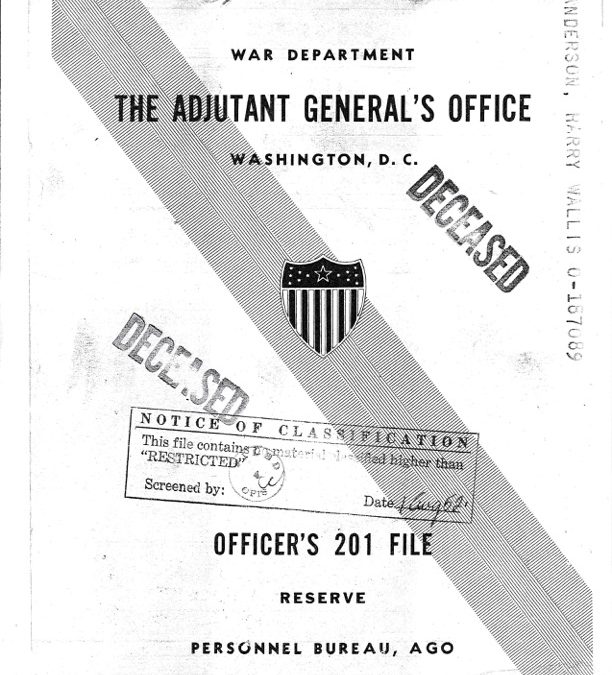Hello again Readers. John here, with another blog entry. Twice in a week – Stop the Madness!
As previously threatened, most of these entries will be about the book and/or writing process.
Today I will talk about a very important topic for those of you interested in writing military biographies: service records. At the beginning of the process when I decided to write a book about my grandfather, HWA, I recognized the need for Army data. I began to collect books relating his involvement in significant events (Bulge, Remagen, etc.). But I also needed some raw primary stuff, a full account, which means his service record (“Officer’s 201 File”).
I dutifully checked in with the National Archives (NARA), which directed me to the St. Louis section, which covered his service period and branch, and I filled out the forms. NARA contacted me with a case worker – Joy. Who was, in fact, a joy. Her initial contact, as expected, included a heavy caveat warning about The Fire. In July 1973, the Military Personnel Records Center in St. Louis experienced a severe fire, which destroyed 16-18 million records. And they don’t even know which or how many, because the pre-computerized indexes went up in the blaze.
Coincidentally, my grandfather had passed away earlier that year, eliminating him as an arson suspect.
After giving me the standard caution about not getting my hopes up, Joy set to work. One of her first follow up calls went like this: “We have no record that he existed. Do you happen to have his service number?” I was a bit surprised – Wasn’t that something they should have given ME?! As it happened, I did have the number, which was stenciled on the back of his Army musette bag I had inherited. She also tried to look him up in the “Silver Star Book” (HWA was awarded two), again with no success. I had pretty much resigned myself to plowing ahead without this key resource, when Joy called, about 6 weeks into the process: “We found records of his pension payments!” More success followed. Three months after first contact, Joy happily announced, “We found him!” When she asked what particular parts of the record I wanted, I told her, well, ALL of it. With a brief hesitation, she told me his service record… was over 800 pages in length. Gulp.
I told her I was going to be using it to write his biography, and since I didn’t know what the record contained, potentially ALL of it would be useful. She agreed and told me it would take a few days to copy it all. Which she did.
So to Joy, and her colleagues at NARA, who persevered: Thank You for all the magnificent work you do!
And to readers of the book, please be grateful that I chose NOT include in the book his urinalysis results from August 1955. Which I have.



Would be interested in seeing an old efficiency report. To see if the Arm included paragraphs on the spouse, as the Navy did,
Did he pass the urinalysis? 🙂
Hi Larry, thanks. The wartime Army efficiency reports were remarkably concise and to the point – shows what is possible when one focuses on what’s important. No mention of spouses, of course. And the urinalysis was for general health purposes, not for drug screening, as with present-day.